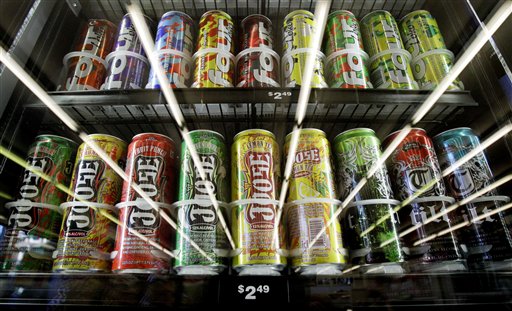The National Institutes of Health spent over $1.6 million studying the "troublesome product" of malt liquor.
The four-year study conducted by the University of Minnesota is looking into how cities can pursue prohibition laws against malt liquor, seeking the most effective measures that could be used against the adult beverage.
"Malt liquor is a troublesome product for communities," the grant for the project states. "Malt liquor is a lager beer with a higher alcohol content than regular beer (4-5 vs. 6-8%), and is associated with frequent daily drinking, heavy drinking, and with problem behaviors such as theft, disorderly conduct, assaults, and panhandling."
"About one-third of the largest U.S. cities have adopted policies to restrict malt liquor often overcoming significant hurdles to do so," according to the grant. "To date, there have been no studies in the published literature that have evaluated the effectiveness of these policies. Rigorous evaluation studies are needed to address current gaps in assessing the effectiveness of malt liquor policies."
The project not only is studying laws already on the books against malt liquor but also wants to come up with new ways to restrict the product, which is legal to Americans 21 years of age or older.
The grant lists specific aims of the study, including the goal to "Develop mew [sic] measures of the restrictiveness of malt liquor and other alcohol policies."
Other aims include determining whether laws restricting the sale of malt liquor reduce crime, and even look at advertising.
"We will focus on state alcohol policies most likely to influence the success of malt liquor policies including underage possession/consumption, purchase, furnishing, false identification, beer taxes, and the retail and whole distribution system for beer," the grant said. "In addition, we will identify and analyze the influence of features of alcohol outdoor advertising policies for states in our study."
The project began in 2012 and is slated to end this May. The study has cost taxpayers $1,626,038 so far.
The grant argues the project is good for public health because of its "practical and real-world implications for cities dealing with problems related to malt liquor use and wishing to adopt malt liquor policies."
"Results will further our understanding of why some local alcohol policies are more effective than others in reducing problems associated with alcohol consumption, and how the state alcohol policy environment can facilitate or hinder local alcohol policymaking efforts," the grant said. "Results will also help local policymakers in other cities."
Results for the study so far have found that Google Street View can be used to identify where malt liquor is sold.
"Google Street View (GSV) can be used as an effective tool to conduct virtual neighborhood audits," according to one published paper. "We expand on this research by exploring the utility of a GSV-based neighborhood audit to measure and match target and comparison study areas. We developed a GSV-based inventory to measure characteristics of retail alcohol stores and their surrounding neighborhoods."
Another article published by the lead researcher on the project examined the drinking habits of gay men.
"The final latent class model consisted of four distinct classes which captured the typical settings where [men who have sex with men] MSM consumed alcohol: ‘home,’ ‘social,’ ‘bar/social,’ and ‘general’ drinkers (i.e., drinks in all settings)," according to the paper. "Regression models showed that ‘general’ drinkers were more likely than ‘social’ drinkers to engage in frequent heavy drinking. Compared to ‘social’ drinkers, general drinkers were also more likely to engage in unprotected anal intercourse (UAIMP) and UAIMP with men met in bars and other venues (e.g., private parties, bath houses) while intoxicated."
